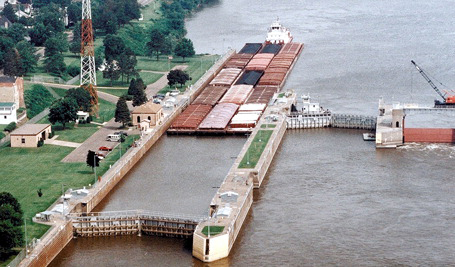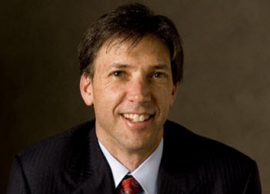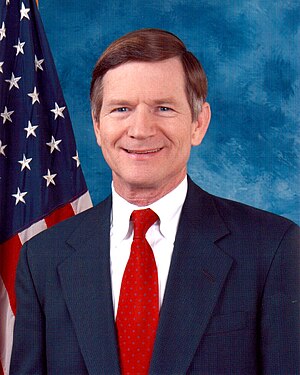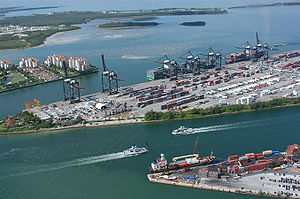Author Archive
Senate Passes WRDA
May 15th, 2013 | By: America's Infrastructure Report Card
ASCE applauds the Senate today for passing the Water Resources Development Act (S. 601). The 83 – 14 vote on final passage caps off a huge bipartisan effort from Environment and Public Works Chairman Barbara Boxer (D-CA) and Ranking Member David Vitter (R-LA). The final $12 billion package includes several of ASCE top priorities for WRDA such as the reauthorization of the National Dam Safety Program, the creation of a National Levee Safety Program, the eventual move toward trust in the Harbor Maintenance Trust Fund, and reforms to accelerate project review and delivery. With Senate passage, attention now turns to the House, where things are moving at a slower pace. Transportation and Infrastructure Chairman Bill Shuster (R-PA) has said his committee hopes to produce a bill by “summer-ish”, while some Republican aides have said that the committee hopes to take action in June on a WRDA package. For now ASCE is pleased to see that WRDA is out of the Senate and urges the House to not be too far behind.Draft Bill Would Change Long Established Peer Review For NSF Research
May 13th, 2013 | By: America's Infrastructure Report Card
Draft legislation is being circulated by new House Science Committee Chairman Lamar Smith (R-TX) which would require all research funded by the National Science Foundation (NSF) to be certified to “advance the national health, prosperity, or welfare” and “secure the national defense” of the United States. The NSF must certify that each funded project is of “the finest quality, is groundbreaking, and answers questions or solves problems that are of utmost importance to society of large.” The draft legislation has drawn a vigorous response from the scientific committee. A letter to Smith from six former NSF Directors stated, “ We believe that this draft legislation would replace the current merit-based system used to evaluate research and education proposals with a cumbersome and unrealistic certification process that rather than improving the quality of research would do just the opposite. The history of science and technology has shown that truly basic research often yields breakthroughs – including new technologies, markets and jobs – but that it is impossible to predict which projects (and which fields) will do that. Progress in science requires freedom to explore important questions regardless of where the answers may lead. Over the years, federal funding of basic research, using peer review evaluation, has led to vast improvements in health care, national security, and economic development.” The draft also drew a sharp response from Rep. Eddie Bernice Johnson (D-TX) the top Democrat on the Committee. In a letter to Smith, Johnson called the draft legislation “the first step on a path that would destroy the merit-based review process at NSF and intrudes political pressure into what is widely viewed as the most effective and creative process for awarding research funds in the world. It is this process that has supported the growth of the American research university system, and it is this process that has established the American research enterprise as innovation of our age.” ASCE has joined with other scientific and engineering organizations in a letter to Smith urging him to withdraw the proposed legislation. A copy of the current draft of the legislation is here.Tags: congress, national science foundation, stem
No Comments »
WRDA on Senate Floor…Call Your Senator Today!
May 8th, 2013 | By: America's Infrastructure Report Card
 The Water Resources Development Act (WRDA) has reached center stage in the Senate this week, with votes beginning on amendments at 2pm today. The legislation provides much needed improvements to locks, dams, levees, and other waterway elements across the country through the authorization of U.S. Army Corps of Engineers programs.
The first hurdle for the bill, a vote on cloture, proved moot when Senators were able to provide unanimous consent to see the legislation move forward for debate Monday night. The reason for agreement was a manager’s amendment that Chairman of the Environment and Public Works Committee, Barbara Boxer (D-CA) and Ranking Member David Vitter (R-LA) put out, resolving some areas of concern that Senators had already voiced.
One of the biggest changes in the manger’s amendment ensures revenues collected into the Harbor Maintenance Trust Fund (HMTF) are used for intended purposes by gradually increasing the authorization level for the Harbor Maintenance Tax (HMT) spending until an authorization level equivalent to full use is achieved in 2020. The guarantee for full HMT revenue use, included in the Committee-passed bill, was removed due to the Appropriations Committee’s objection. The manager’s amendment continues to cite that the increased appropriations cannot be achieved if funding is reduced in other areas of the Corps budget, but the point of order related to this provision was also removed. For FY 2014, the appropriation would be $1 billion, with an additional $100,000 provided each fiscal year thereafter. If this agreement is included in the final bill, it would result in a 14-15% increase in funds for FY 2014.
At this time ASCE asks Key Contacts to call their Senators and urge them to support WRDA. ASCE has been an advocate of the legislation and is pleased with several aspects of the bill including: the creation of a National Levee Safety Program, the reauthorization of the National Dam Safety Program, the restoration of trust in the the HMTF, and efforts to streamline the project delivery process. Currently it looks like the bill will come up for a final vote next week, so Senators need to hear from their constituents NOW.
The Water Resources Development Act (WRDA) has reached center stage in the Senate this week, with votes beginning on amendments at 2pm today. The legislation provides much needed improvements to locks, dams, levees, and other waterway elements across the country through the authorization of U.S. Army Corps of Engineers programs.
The first hurdle for the bill, a vote on cloture, proved moot when Senators were able to provide unanimous consent to see the legislation move forward for debate Monday night. The reason for agreement was a manager’s amendment that Chairman of the Environment and Public Works Committee, Barbara Boxer (D-CA) and Ranking Member David Vitter (R-LA) put out, resolving some areas of concern that Senators had already voiced.
One of the biggest changes in the manger’s amendment ensures revenues collected into the Harbor Maintenance Trust Fund (HMTF) are used for intended purposes by gradually increasing the authorization level for the Harbor Maintenance Tax (HMT) spending until an authorization level equivalent to full use is achieved in 2020. The guarantee for full HMT revenue use, included in the Committee-passed bill, was removed due to the Appropriations Committee’s objection. The manager’s amendment continues to cite that the increased appropriations cannot be achieved if funding is reduced in other areas of the Corps budget, but the point of order related to this provision was also removed. For FY 2014, the appropriation would be $1 billion, with an additional $100,000 provided each fiscal year thereafter. If this agreement is included in the final bill, it would result in a 14-15% increase in funds for FY 2014.
At this time ASCE asks Key Contacts to call their Senators and urge them to support WRDA. ASCE has been an advocate of the legislation and is pleased with several aspects of the bill including: the creation of a National Levee Safety Program, the reauthorization of the National Dam Safety Program, the restoration of trust in the the HMTF, and efforts to streamline the project delivery process. Currently it looks like the bill will come up for a final vote next week, so Senators need to hear from their constituents NOW.
Tags: congress, dams, ports
No Comments »
Civil Engineer and Inventor John Hillman Named by White House as Transportation Champion of Change
May 8th, 2013 | By: America's Infrastructure Report Card
 Imagine holding four U.S. patents for a landmark and unique bridge technology, more than a dozen foreign or pending patents and winning every major design and construction award available in the nation. Now imagine all of this being accomplished by one individual – civil engineer John Hillman.
In a White House ceremony today, Hillman and 10 other notable individuals were recognized as Transportation Champions of Change for their exemplary work and leadership in developing and implementing transportation technology solutions to enhance performance, reduce congestion, improve safety and facilitate communication across the transportation industry at the local, state and national levels.
A structural engineer with more than 27 years of experience, Hillman’s more noteworthy achievements include managing the construction of a 1,263-foot incrementally launched bridge in Puerto Rico and the design and management of the award-winning 35th Street pedestrian bridge over Lake Shore Drive in Chicago, Ill. He has also been the engineer of record for almost every type of bridge structure imaginable, including a cable-stay, an arch, a truss and a suspension bridge, as well as numerous conventional structures.
Despite an impressive array of world-class bridge designs, Hillman’s crowning achievement is the invention of the Hybrid-Composite Beam (HCB®), a new type of structural beam developed for use in bridges and other structures. This unique technology is a tied arch of concrete and steel contained in a composite shell that optimizes the structural performance of each material in the composition. What results is an economical structural beam for railroads, highways and marine structures that offers a service life of more than 100 years.
The HCB provides for an economical application of advanced composites in infrastructure bridge technology, resulting in bridges that are stronger, safer, lighter, faster to install and much more sustainable than conventional bridge technologies. To date, 24 HCB bridges have been constructed in seven different states, with many more in various stages of planning, design and construction.
According to Hillman, he became a civil engineer because he loves building things. He said he gravitated towards bridges because literally and figuratively he gets to help people stay connected.
Hillman’s goal with the invention and development of the HCB is to provide a revolutionary bridge technology that not only remedies the state of the nation’s decaying bridges, but also provides a solution to the problem that will reduce the burden of infrastructure rehabilitation costs for future generations.
Here’s a video about other Champions of Change featuring an ASCE Past President, Kathy Caldwell.
Imagine holding four U.S. patents for a landmark and unique bridge technology, more than a dozen foreign or pending patents and winning every major design and construction award available in the nation. Now imagine all of this being accomplished by one individual – civil engineer John Hillman.
In a White House ceremony today, Hillman and 10 other notable individuals were recognized as Transportation Champions of Change for their exemplary work and leadership in developing and implementing transportation technology solutions to enhance performance, reduce congestion, improve safety and facilitate communication across the transportation industry at the local, state and national levels.
A structural engineer with more than 27 years of experience, Hillman’s more noteworthy achievements include managing the construction of a 1,263-foot incrementally launched bridge in Puerto Rico and the design and management of the award-winning 35th Street pedestrian bridge over Lake Shore Drive in Chicago, Ill. He has also been the engineer of record for almost every type of bridge structure imaginable, including a cable-stay, an arch, a truss and a suspension bridge, as well as numerous conventional structures.
Despite an impressive array of world-class bridge designs, Hillman’s crowning achievement is the invention of the Hybrid-Composite Beam (HCB®), a new type of structural beam developed for use in bridges and other structures. This unique technology is a tied arch of concrete and steel contained in a composite shell that optimizes the structural performance of each material in the composition. What results is an economical structural beam for railroads, highways and marine structures that offers a service life of more than 100 years.
The HCB provides for an economical application of advanced composites in infrastructure bridge technology, resulting in bridges that are stronger, safer, lighter, faster to install and much more sustainable than conventional bridge technologies. To date, 24 HCB bridges have been constructed in seven different states, with many more in various stages of planning, design and construction.
According to Hillman, he became a civil engineer because he loves building things. He said he gravitated towards bridges because literally and figuratively he gets to help people stay connected.
Hillman’s goal with the invention and development of the HCB is to provide a revolutionary bridge technology that not only remedies the state of the nation’s decaying bridges, but also provides a solution to the problem that will reduce the burden of infrastructure rehabilitation costs for future generations.
Here’s a video about other Champions of Change featuring an ASCE Past President, Kathy Caldwell.
Senate to Take Up Water Resources Development Act (WRDA)
May 6th, 2013 | By: America's Infrastructure Report Card
The Senate is expected to take up the Water Resources Development Act (WRDA) when Senators return to Washington today. At this time, Majority Leader Harry Reid (D-NV) has said that he will hold a cloture vote on the legislation Monday evening. Cloture requires 60 votes and limits debate in order to block an attempt at a filibuster. ASCE strongly urges the Senate to take up and pass S.601, the Water Resources Development Act (WRDA) of 2013. ASCE’s 2013 Report Card for America’s Infrastructure graded the nation’s ports a “C”, inland waterways a “D-”, dams a “D”, and levees a “D-”. Our nation’s water resources infrastructure is critical to our economy, public safety, and the preservation and enhancement of our environmental resources. In fact, ASCE’s Failure to Act economic study on the nation’s marine ports and inland waterways shows that underinvesting in just these two sectors threatens more than 1 million U.S. jobs and $270 billion in U.S. exports by 2020. The current Senate bill makes a strong commitment to our nation’s critical water resources infrastructure and ASCE strongly supports language that:- Creates a National Levee Safety Program;
- Reauthorizes the National Dam Safety Program;
- Restores trust to the Harbor Maintenance Trust Fund;
- Creates a new Water Infrastructure Finance Innovations Authority (WIFIA); and
- Streamlines the project approval process for water resources projects.
Tags: congress, dams, infrastructure, ports, senate, water resources development act
No Comments »
Former USDOT Heads Offer Advice While New Appointee Is Named
April 30th, 2013 | By: America's Infrastructure Report Card
In a serendipitous coincidence, six of America’s former Secretaries of the U.S. Department of Transportation (USDOT) gathered for the Goode Transportation Policy Conference less than 10 minutes away from the White House where President Obama was announcing his new nominee for Secretary of Transportation, Charlotte Mayor Anthony Foxx. Here’s what the former secretaries had to say both to the new nominee and about the President’s they served: What advice would these former DOT heads have for the nominee who comes behind them? “Perhaps start with ‘Our Father who art in heaven,’” joked Norman Mineta, Secretary of Transportation from 2001- 2006 under Bush. All six former Secretaries reiterated the same theme – take the lessons you learned from the outside but come to D.C. knowing that the USDOT staff are ready and able to advise on a successful path. Andrew Card, former Secretary of Transportation under President Bush mentioned that keeping peripheral vision as a leader can be challenging but important to achieving the goals you set out. Former Secretary Mary Peters, also under Bush, spoke to the need to set a “north star” for the staff in order to achieve what’s needed in the short timeframe before the next transportation bill. What conversations did former Secretaries have with their President to set the agenda? Former Secretary Rodney Slater who lead the USDOT during President Clinton’s mantra of “It’s the economy stupid” said that aligning their agenda to the President’s began with shifting how they even talked about transportation. During a time of reinventing government, the USDOT agenda was about what connected us and what moves us forward as a country emphasizing how we use transportation to connect people to opportunities and how transportation gives us an easy reach to markets, both globally and locally. However, not every Secretary had a direct conversation with the President to set their agenda. After working for President Reagan for years, former Secretary James Burnley knew exactly what the priorities were. However, they worked closely on some interesting discussions that are still relevant today including where the air traffic control division would be spun off of FAA similar to Canada. Want to find out more? Read the President’s Announcement of Foxx Read the Miller Center’s Reports on Transportation PolicyASCE Statement on the Nomination of Mayor Anthony Foxx for Transportation Secretary
April 29th, 2013 | By: America's Infrastructure Report Card
WASHINGTON, D.C. – The following is a statement from Gregory E. DiLoreto, P.E., P.L.S, D.WRE, president of The American Society of Civil Engineers (ASCE), regarding the nomination of Charlotte Mayor Anthony Foxx for U.S. Transportation Secretary:
“We are very encouraged by Mayor Foxx’s nomination. Now is the time to reaffirm our commitment to improving our nation’s infrastructure and building a 21stcentury
Anthony Foxx, Democrat, mayor of Charlotte, North Carolina. Taken during his 2009 campaign for mayor. (Photo credit: Wikipedia)
###
Founded in 1852, the American Society of Civil Engineers represents more than 140,000 civil engineers worldwide and is America’s oldest national engineering society. For more information, visit www.asce.org.Happy Earth Day from ASCE!
April 22nd, 2013 | By: America's Infrastructure Report Card
Did you know the first Earth Day was celebrated in 1970? That it was first proposed by Senator Gaylord Nelson of Wisconsin? That Senator Nelson was inspired by campus activism on the late 1960’s? Learn all about the history of Earth Day here. The first Earth Day led to the creation of the United States Environmental Protection Agency and the passage of the Clean Air, Clean Water, and Endangered Species Acts. Earth Day went global in 1990, mobilizing 200 million people in 141 countries and elevating environmental issues to the world stage. Earth Day 1990 gave a huge boost to recycling efforts worldwide and helped pave the way for the 1992 United Nations Earth Summit in Rio de Janeiro. It also prompted President Bill Clinton to award Senator Nelson the Presidential Medal of Freedom in 1995 – the highest honor given to civilians in the United States – for his role as Earth Day founder. Learn about what ASCE is doing to encourage sustainable civil engineering practices on the sustainability section of the ASCE Web site.Tags: sustainability
No Comments »
Obama’s FY 2014 Priorities STEM Education Programs
April 19th, 2013 | By: America's Infrastructure Report Card
The President’s FY 2014 budget request places new emphasis on STEM (Science-Technology- Education-Mathematics) education. The total STEM education funding request, across all federals agencies, amounts to $3.1 billion; this represents an increase of 6.7 percent over 2012 funding levels. While the proposed increase is noteworthy, the President’s proposal includes an ambitious reorganization of federal STEM programs. The major components include consolidation or elimination of 114 federal STEM programs. This would bring the total down from 226 to 112. Specifically 78 programs are terminated with funds redirected to other agencies (this totals $176 million). The breakdown by Agency of targeted programs and the expected savings:- Department of Defense: 6 programs (out of 16) – $49.4 million
- National Aeronautics and Space Administration (NASA): 38 programs (out of 61) – $47.5 million
- National Institutes of Health (NIH): 9 programs (out of 24) – $27.6 million
- Environmental Protection Agency (EPA): 2 programs (out of 7) – $16.1 million
- National Oceanic and Atmospheric Administration (NOAA): 6 programs (out of 15) – $13.0 million
- Department of Agriculture (USDA): 6 programs (out of 16) – $10.9 million
- Department of Energy: 8 programs (out of 18) – $10.9 million
- Department of Homeland Security: 1 program (out of 3) – $1.0 million
- Nuclear Regulatory Commission: 1 program (out of 3) – less than $0 million
Tags: congress, stem
No Comments »
ASCE Educates State Officials on the Report Card, You Can get the Same Information!
April 18th, 2013 | By: America's Infrastructure Report Card
ASCE recently conducted a webinar in partnership with the Council of State Governments (CSG) for an audience of state policymakers. The webinar focused on the 2013 Report Card on America’s Infrastructure and how state governments can use the data contained in the Report Card in order to help improve their local infrastructure. Notable participants included Michigan’s Secretary of Transportation Kirk Stedule who is not only a P.E. but an ASCE member. Visit CSG’s Knowledge Center in order to download the audio portion of the webinar and the slides.


 */ ?>
*/ ?>



















